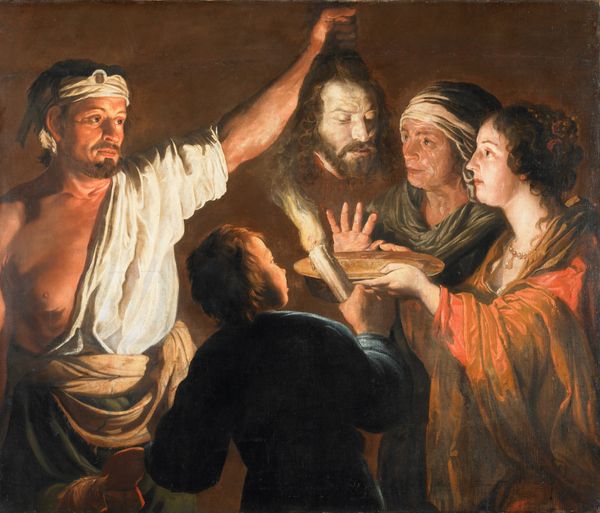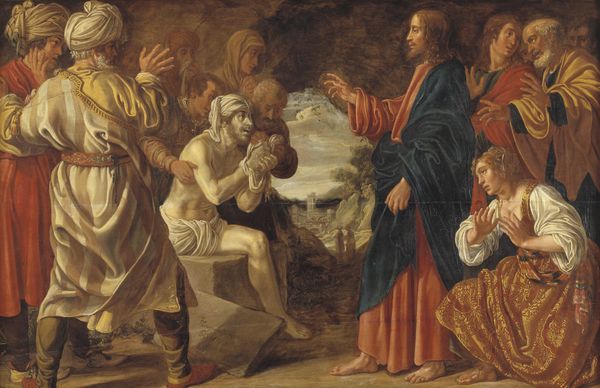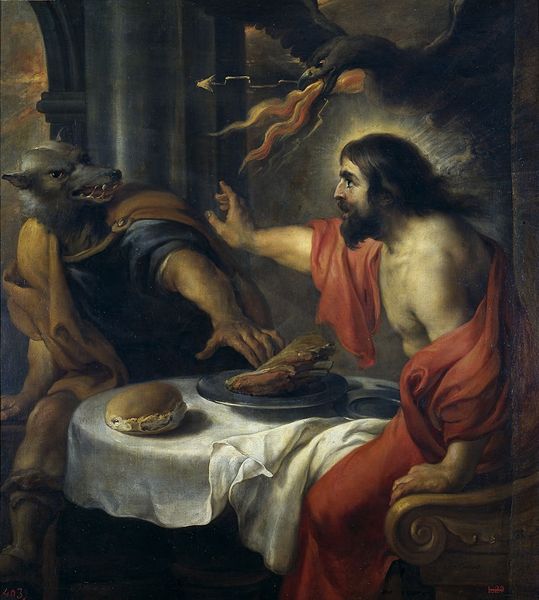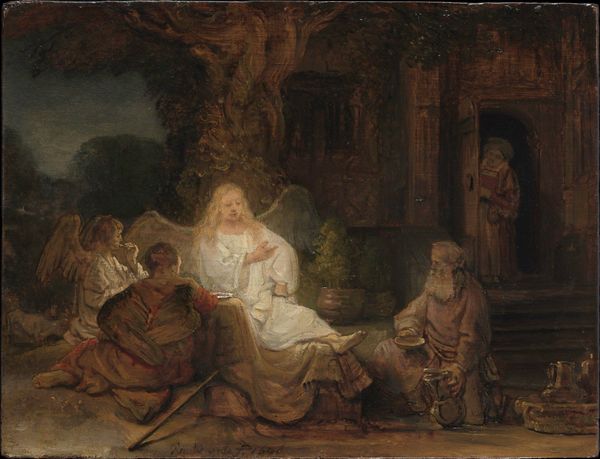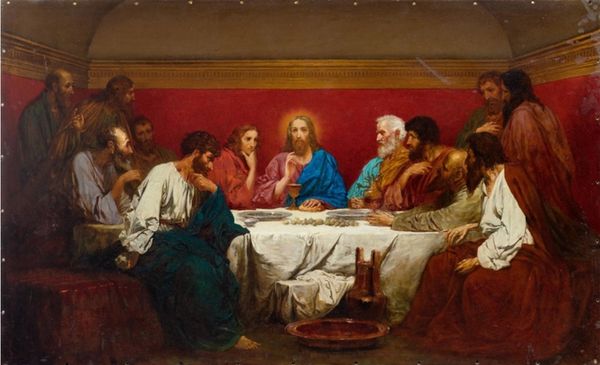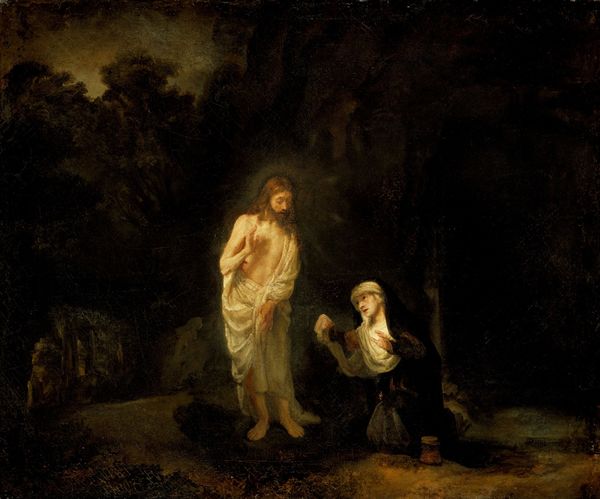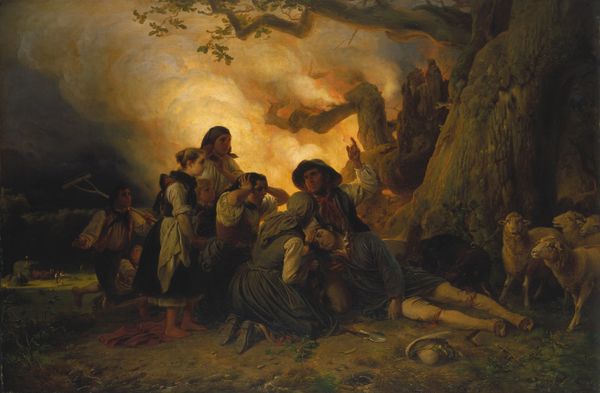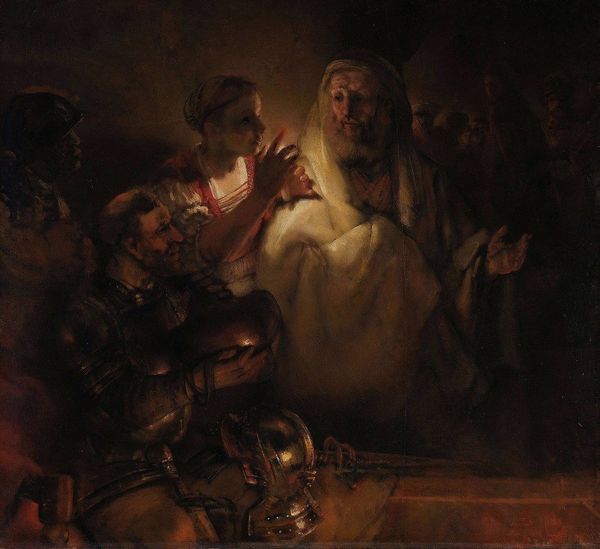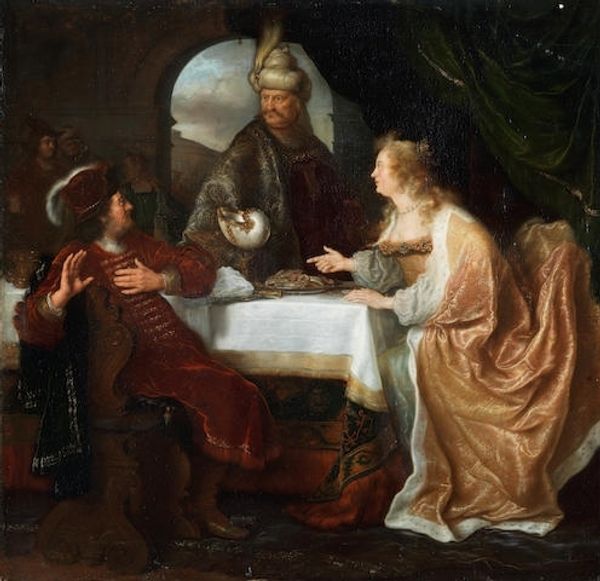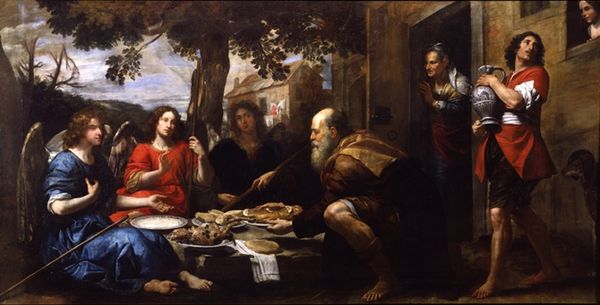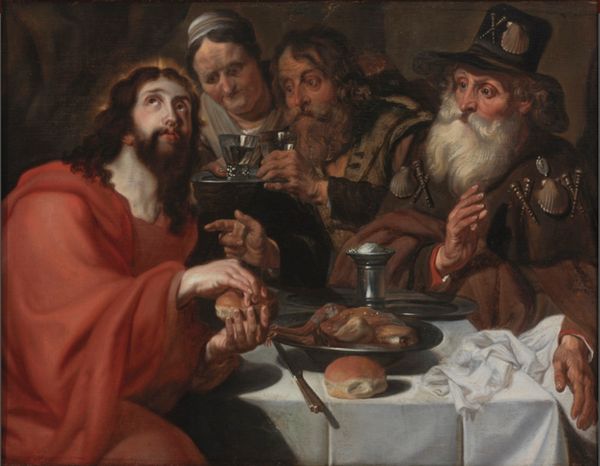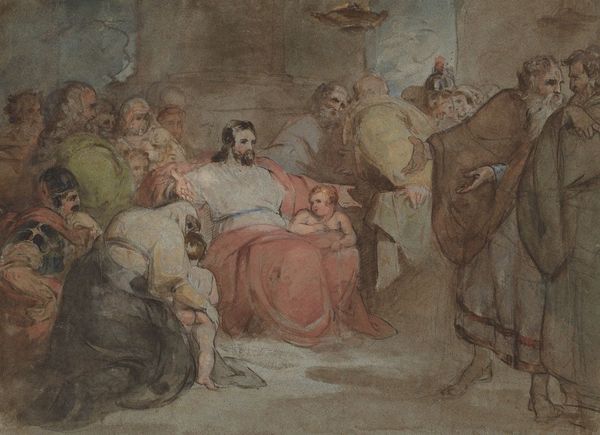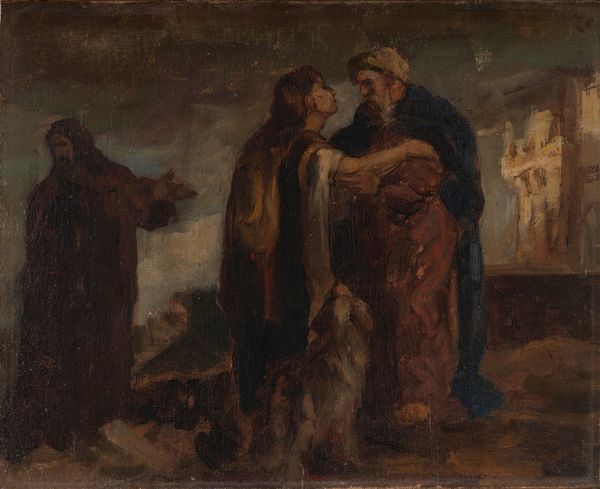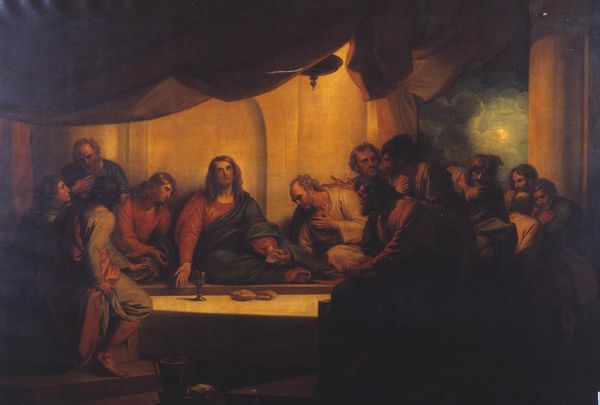
painting, oil-paint
#
narrative-art
#
painting
#
oil-paint
#
figuration
#
oil painting
#
romanticism
#
history-painting
Copyright: Public Domain: Artvee
Curator: The atmosphere is really subdued, isn't it? Almost muted browns and grays dominate. I’m immediately drawn to that sense of contained revelation, of something momentous happening in a humble setting. Editor: Indeed. What we have here is "The Supper at Emmaus" by John Linnell, created in 1843 using oil paints. Linnell, deeply rooted in the Romantic tradition, captures a pivotal moment in Christian scripture, the revelation of Christ to two disciples after his resurrection. And you are right: it feels so still. Curator: The muted tones definitely lend it a feeling of solemnity. I almost want to say they feel very...English? There is this idea of restraint even when presenting what for some is an incredibly profound moment. I also love how he captured light emanating from Christ. Editor: Yes, there is a unique tension in Linnell's choice of stylistic interpretation here. In the early 1840s, the Church of England faced considerable internal conflict, and artistic depictions of biblical narratives came under great scrutiny. The direct representation of divinity in art, the specific style adopted by an artist became a statement—aligning with or challenging established religious and artistic norms. This Romantic interpretation of the event places personal emotion at the heart of faith. Curator: Ah, interesting! It makes you wonder how audiences might have responded. Were they looking for grandiose displays of divinity, or was this intimacy something new, perhaps more…palatable? Also the expressions on the figures are amazing, that instant of shock as their guest turns to pure shining light, love it! Editor: Early to mid-nineteenth century England saw a surge in religious debates and social reforms, reflecting a move towards a more personal and less ceremonial connection with religion. Therefore, this intimate portrayal of the revelation resonates with that sentiment, emphasizing personal faith rather than spectacle, appealing to a segment of society seeking spiritual meaning in simplicity and emotion. Curator: That actually reframes my perspective a bit. I was so focused on the individual, on the subjective experience of the disciples, but I hadn't really considered how the painting itself might be participating in these larger cultural conversations. Editor: Art, after all, doesn't exist in a vacuum. Its beauty is always amplified when we consider the conversations it both provokes and reflects within its own time and place. Curator: A good reminder! There is a lot to see and even more to understand behind what's right in front of our eyes, isn’t there?
Comments
No comments
Be the first to comment and join the conversation on the ultimate creative platform.
